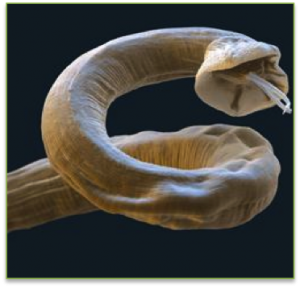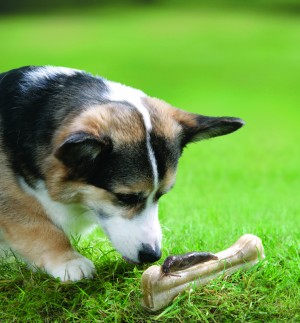News
Lungworm Alert
by on March 5th, 2013
Category: News, Tags:
 IF LAST year’s weather is anything to go by, there’s a fair chance that Spring and Summer 2013 will be another wet one. Apart from making us all generally depressed, there are in addition, some animal health issues associated with this.
IF LAST year’s weather is anything to go by, there’s a fair chance that Spring and Summer 2013 will be another wet one. Apart from making us all generally depressed, there are in addition, some animal health issues associated with this.
Slugs and snails love warmer wet weather and as well as being very bad news for gardeners, they can also spell trouble for dogs cats.
Slugs and snails can carry the larvae of the potentially life threatening lungworm parasite.
This is a particular problem for dog owners since dogs may unwittingly swallow infected snails and slugs whilst exploring parks and gardens. Even snail slime trails left on grass and dog toys can be infected with lungworm eggs.
In dogs lungworm infection is potentially extremely serious and can be fatal.
In dogs, once swallowed, the larvae migrate to the heart where they will develop into adult worms. The adult lungworms live in the heart and those blood vessels supplying the lungs. Here they lay their eggs, which hatch into larvae and migrate into the airways of the lungs. Affected pets may show a range of symptoms including: coughing, reluctance to exercise, weight loss, fits, diarrhoea, and blood clotting problems. The disease is not infrequently fatal.
To complete the life-cycle, the larvae that have migrated to the lungs are in turn coughed up, swallowed and passed out in the dog’s faeces. As the faeces breaks down, the larvae are then eaten by snails and slugs.
Feline lungworm is less common and severe than in dogs.
 In the case of the cat lungworm the intermediate host (slug or snail) itself is not infective. The mollusc has to be eaten by a paratenic host, either a bird or a rodent, to cause infection. The bird or rodent in turn has to be eaten by a cat in order that the life cycle can be completed and the cat can become infected. Ingesting a snail, slug or snail trail alone will not infect a cat.
In the case of the cat lungworm the intermediate host (slug or snail) itself is not infective. The mollusc has to be eaten by a paratenic host, either a bird or a rodent, to cause infection. The bird or rodent in turn has to be eaten by a cat in order that the life cycle can be completed and the cat can become infected. Ingesting a snail, slug or snail trail alone will not infect a cat.
It is because the common feline lungworm lives in the air spaces in the lung tissue that infection is not usually quite as serious as in canines. Also many cats will develop natural immunity to the parasites resulting in their expulsion after a few months and these cats may never show any symptoms.
When they do occur, signs can be very acute. Coughing following exertion is usually the first sign together with laboured or difficult breathing (dyspnoea). Sometimes there is marked lack of condition. All these signs are similar to those of chronic cat ‘flu.
Lungworm is not prevented by the majority of routine wormers against roundworms and tapeworms, so in addition to these we recommend specific treatment aimed at preventing lungworm. It is also vitally important for dog owners to clean up after their dogs in the garden and on walks to prevent the spread of worms.
Please let us advise you on the best worm and flea treatments available.
You can leave a response, or trackback from your own site.
